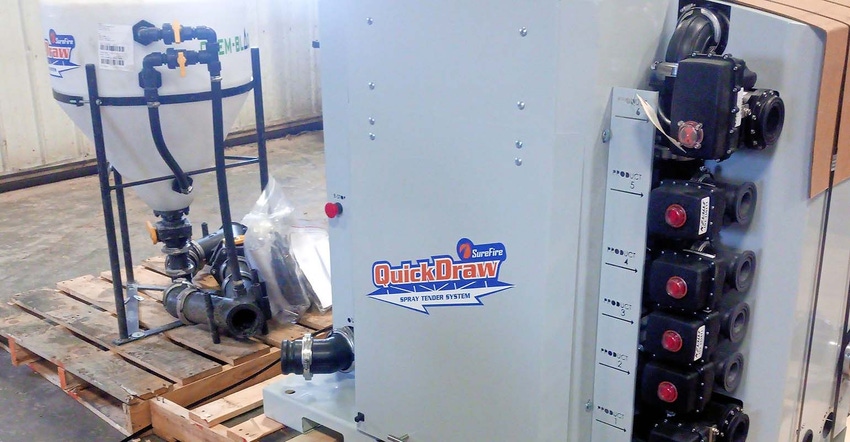February 12, 2018

A friend and I both traded sprayers this fall. In talking, we determined the value of a machine hour on a sprayer is somewhere between $100-$140. I can spray off an 80-acre load in about 40 minutes. Yet it can take more than 30 minutes to load the next batch. Add in some drive time, and efficiency is less than 50%.
Inefficiency can become a real issue when timetables are tight. The machine sits idle half its life.
We hope to improve on that. In December, we ordered a Quickdraw by Surefire Ag. If you haven’t seen the magazine ads, this machine is used to meter, mix, and load products. The main target area is for spray applications. Once the user inputs rates and connects the product totes, everything is automatic with the push of a button (my understanding anyway). This machine is advertised to reduce loading time to 8 minutes for a 1,000-gallon batch.
My hope is that we can cut loading time in half. In addition, with confidence in metered product, it may be easier to have someone bring ‘hot loads’ to the field. (A hot load is a premixed spray solution delivered to field with no need to add the chemicals on site.)
Aerial spraying
We also see added value for the Quickdraw in airplane loads. It is our practice to supply the air tractors with hot loads. With the aerial application rates being so much less (3 gpa compared to 15 gpa), it is even more critical to get loads mixed accurately. Last year we even resorted to scaling loads so we could be accurate.
We also plan to use the Quickdraw to load starter fertilizer. We add micros and other products to our starter. In the past is has been somewhat of a guessing game. Now we will be able to be precise!
We hope to recoup the cost of the quickdraw in a couple years. More importantly, we are taking human error factor out of the equation and reducing stress.
When we traded sprayers, we traded up to 120-foot booms. Even though I said I would slow down (wink, wink), I think we will still get more acres per hour. Since we are now a multiple of our planter width we can stay in controlled traffic patterns.
We are also swapping tires to get more footprint on the ground. In doing this we can reduce our ground pressure from nearly 40 psi to 26 psi. Tires weren’t cheap but we continue to make a focused effort to continue to reduce compaction. The sprayer was the worst tool we had left.
The opinions of the author are not necessarily those of Farm Futures or Farm Progress.
About the Author(s)
You May Also Like






